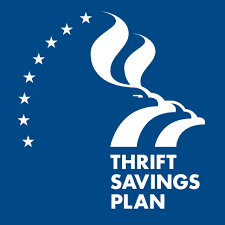Thrift Savings Plan (TSP) vs. 401(k)

The annual contribution amounts for the two retirement plans are nearly identical. But public employees will see significant differences in other areas, such as where they may invest their money.
Tax Benefits
Both the TSP and the 401(k) plans have Roth options. The money you donate is tax-deductible and deferred if you use the traditional method. Your money is tax-free as long as it’s invested, like when a mutual fund sells stock or earns dividends. You must pay regular income tax on withdrawals after attaining the age of 59½.
Unlike traditional retirement contributions, Roth 401(k) and TSP contributions don’t reduce taxable income. Your money grows tax-deferred, and you can take it out tax-free if you’ve had it for five years and are at least 59½.
Employer contributions to TSPs or 401(k) plans are generally deductible from an employee’s taxable income, subject to IRS restrictions (IRS).
In 2022, the maximum 401(k) or TSP contribution is $20,500.
Contribution Limits
The contribution limits are identical. Employees can contribute up to $19,500 in 2021, and those over 50 can contribute an extra $6,500. The 401(k) and TSP contribution caps will rise to $20,500 in 2022, but the catch-up contribution will stay steady at $6,500.
Early Withdrawals
Both TSPs and 401(k) plans and incentivize employees to keep their money in the plan until retirement. Traditional accounts charge a 10% early withdrawal penalty on the entire balance (principal and earnings) withdrawn before 59½.
You can withdraw your principal tax-free from a Roth 401(k) or TSP because you’ve already paid income taxes on it. If you’re under 59½ and haven’t owned the account for five years, you may have to pay income tax and a 10% penalty on any gains.
If you have a 401(k) plan, you may be able to avoid the 10% penalty if you qualify for an employer-approved hardship distribution. You must have an “immediate and substantial financial need” that other means cannot meet. Even if you avoid the penalty, you’ll still owe taxes on your withdrawal.
The TSP is stricter. While hardship withdrawals are permitted under certain conditions, they’re subject to a 10% penalty plus applicable taxes.
Loans
A TSP, like some 401(k) plans, allows employees to borrow from their retirement funds and repay them with interest. Like 401(k) loans, you can only borrow up to half your vested balance or $50,000. On the other hand, TSP loans cannot exceed the employee’s own contributions plus any gains.
These loans are usually repaid over a period of 1 to 5 years. However, mortgage loans for primary residences can be repaid over time. Payment terms for TSP members’ home loans can range from 1 to 15 years.
Owners of TSPs can annuitize all or part of their balance in retirement, ensuring a steady monthly income.
Retirement Distributions
Private sector employees with 401(k) plans often have several options for withdrawing funds after retirement. Options include accepting a lump-sum payment, making periodic payments, or rolling the money over into an IRA. Certain plans also allow you to buy an annuity through your employer’s insurance provider. That will enable you to convert your balance into monthly payments or a lifetime income stream.
On the other hand, A TSP allows you to access your retirement funds more freely. Federal employees can set up installment payments based on predetermined amounts or life expectancy statistics. Single withdrawals are available as well.
TSP members can also convert their balance into an annuity, ensuring lifetime income. Adding a joint annuitant (usually a spouse) or a “10-year certain” provision guarantees money to a beneficiary if you die within a decade of receiving payments can be customized by retirees.
Federal employees with TSP accounts, like 401(k), can roll their balance into an IRA when they leave the government.
Required Minimum Distributions (RMDs)
Both plans impose RMDs on retired participants. Non-compliance with these minimal withdrawals results in a 50% tax on any required distribution.
Whether you worked for a private or public employer, you must start taking RMDs at age 72 (or 70½ if you were born before July 1, 1949). However, you must still be employed by the government or, in the case of 401(k) participants, by the company that sponsors the plan.
Investment Choices
The choice of investments is perhaps the most noticeable distinction between a 401(k) plan and a TSP. A 401(k) plan is administered by an employer and offers various investment options. Employees have an average of 21 options. Common choices include mutual funds and target-date funds. You can choose from literally thousands of funds with some plans that include access to brokerage services.
The TSP’s investment choices are limited with access only to a few target-date funds, also called “lifecycle” funds. These are simple stock and bond funds that automatically change your asset allocation to more conservative options as you near retirement.
Also, service members and government employees can mix and match five different funds.
Fees
TSP members have one significant advantage over other 401(k) investors—lower costs. The total expense ratio for TSP funds is 0.055%, including investing and administration. So, if you have $1,000 in your account, you pay the administrator $0.55 per year.
According to ICI, the average 401(k) plan cost for members in 2017 was 0.58% (though it’s generally lower for larger corporations). As a result, the average 401(k) plan charges ten times what the feds do for their employees. Because these fees are deducted annually, they compound and can significantly impact your long-term returns.
Employer Contributions
A TSP provides a 1% automatic employer contribution, plus a matching contribution of up to 4% of your salary, for a total of 5%.
That’s more than most 401(k) plans. According to ICI, the most common large benefit plan is a 50% match on up to 6% of your pay, with a maximum employer contribution of only 3%.
Contact Information:
Email: [email protected]
Phone: 9568933225
Bio:
Rick Viader is a Federal Retirement Consultant that uses proven strategies to help federal employees achieve their financial goals and make sure they receive all the benefits they worked so hard to achieve.
In helping federal employees, Rick has seen the need to offer retirement plan coaching where Human Resources departments either could not or were not able to assist. For almost 14 years, Rick has specialized in using federal government benefits and retirement systems to maximize retirement incomes.
His goals are to guide federal employees to achieve their financial goals while maximizing their retirement incomes.
Popular posts

CSRS Retirement Plans Are...
Key Takeaways CSRS remains...

TriCARE vs. FEHB: How...
Key Takeaways Military retirees...
Free Retirement Benefits Analysis
Federal Retirement benefits are complex. Not having all of the right answers can cost you thousands of dollars a year in lost retirement income. Don’t risk going it alone. Request your complimentary benefit analysis today. Get more from your benefits.
I want more



